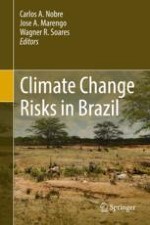2019 | OriginalPaper | Buchkapitel
8. Assessing the Possible Impacts of a 4 °C or Higher Warming in Amazonia
verfasst von : Gilvan Sampaio, Laura S. Borma, Manoel Cardoso, Lincoln Muniz Alves, Celso von Randow, Daniel Andrés Rodriguez, Carlos A. Nobre, Felipe Ferreira Alexandre
Erschienen in: Climate Change Risks in Brazil
Aktivieren Sie unsere intelligente Suche, um passende Fachinhalte oder Patente zu finden.
Wählen Sie Textabschnitte aus um mit Künstlicher Intelligenz passenden Patente zu finden. powered by
Markieren Sie Textabschnitte, um KI-gestützt weitere passende Inhalte zu finden. powered by
